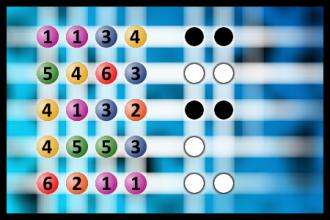What a winning combination?
The computer chose a secret code (sequence of 4 digits from 1 to 6). Your goal is to find that code. Black circles indicate the number of hits on the right spot. White circles indicate the number of hits on the wrong spot.
Words to live by
Well, if Jerry Springer isn't educational TV,why does it make me feel so much smarter?
A TV can insult your intelligence, but nothingrubs it in like a computer.
I tried to get in touch with my inner child,but he isn't allowed to talk to strangers.
I have to take my paycheck to the bank.It's too little to go by itself.
I must be following my diet too closely.I keep gaining on it.
Welcome to Megacomputer's 24-hour helpline.If you have been waiting LESS than 24 hours,please remain on the line.
Whenever I'm in a mood to watch the world go by,I just keep to the posted speed limit.
Don't sweat the petty things and don't pet the sweaty things.
One tequila, two tequila, three tequila, floor.
If man evolved from monkeys and apes,why do we still have monkeys and apes?

